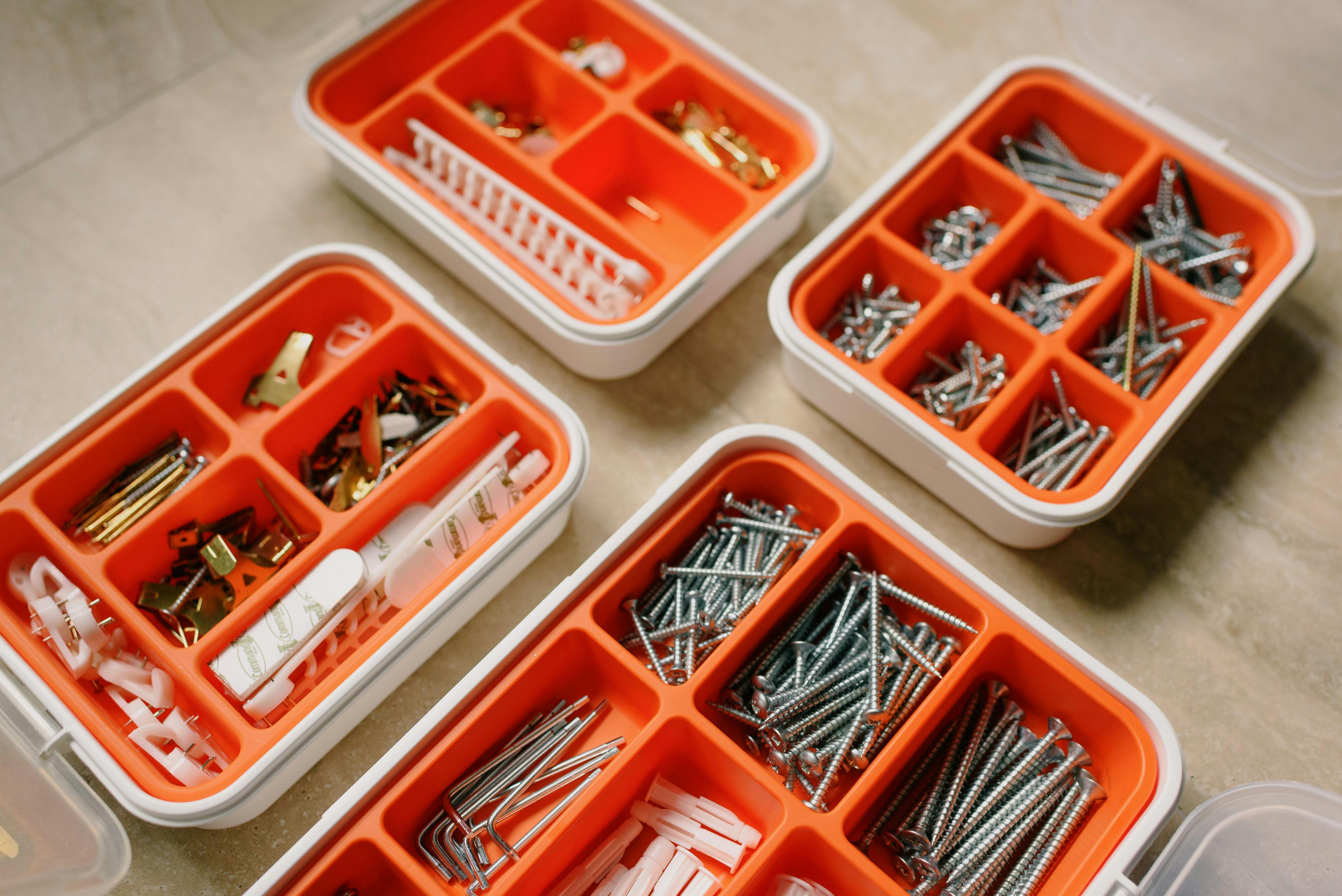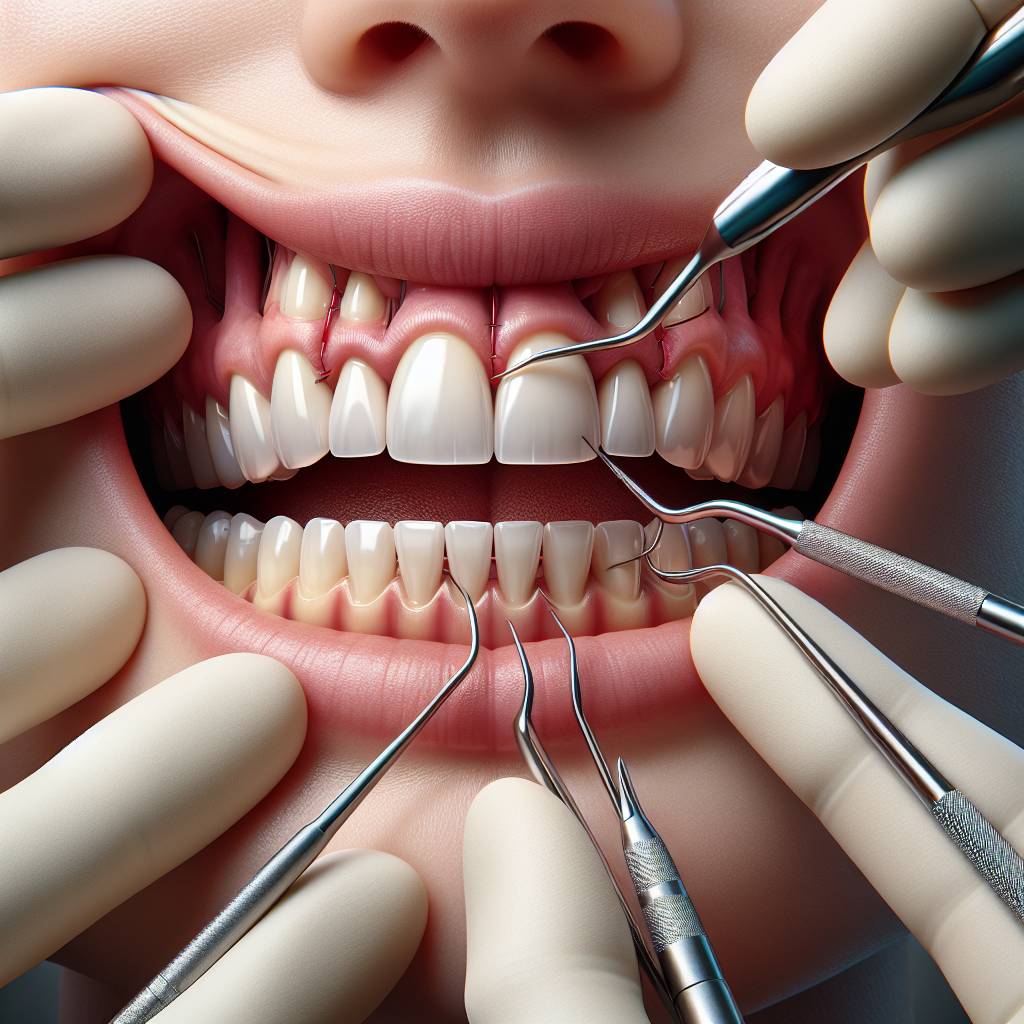Having a gap in your front teeth can be a source of embarrassment and insecurity. Fortunately, there are many different solutions to fix the gap in your front teeth. Depending on the size and location of the gap, you may be able to opt for a non-invasive procedure such as dental bonding or dental veneers. Alternatively, you may need to undergo orthodontic treatment with braces or Invisalign. In this article, we will discuss how to fix a gap in your front teeth and provide an overview of the various treatments available to help you decide which is best for you.Fixing a gap in your front teeth can be done in a few different ways, depending on the size of the gap and the desired outcome. The most common method is to have your dentist place dental bonding material over the gap to make it look like one tooth. This is a simple, non-invasive procedure that can be done in one visit. Another option is to get a bridge or veneers, which are made of porcelain and are more permanent solutions. Both of these methods require multiple visits and may involve minor oral surgery. Finally, if you want a more permanent solution, you can opt for orthodontic treatment with braces or Invisalign to move the teeth closer together. This treatment may take several months or longer depending on the severity of the gap.
Correcting a Gap in Front Teeth
Gaps in front teeth can be corrected with various dental treatments. The most common methods are bonding, veneers, crowns, and braces. Bonding is the least expensive and quickest option to close the gap between two teeth. It involves applying a composite resin material to the affected teeth and hardening it with a special light. The material is then shaped to match the surrounding teeth and polished for a natural look. Another option is veneers, which are thin porcelain shells that fit over the front of your teeth. Veneers are more expensive than bonding but last longer and are less prone to chipping or staining. Crowns may be used if the gap is larger or if there is significant damage to the gum line or tooth structure. Crowns are made from porcelain or metal and completely cover the affected tooth for added strength and stability. Finally, braces can be used to gradually move teeth into place over time until the gap is closed. Braces require regular visits to your orthodontist for adjustments and can take up to two years before you see results.
No matter what method you choose for correcting a gap in your front teeth, it’s important to visit your dentist for proper assessment before making a decision on treatment. Your dentist will help you decide which option is right for you based on your dental condition, budget, lifestyle, and desired outcome. With proper care and maintenance, you can enjoy healthy-looking teeth that are free of gaps!
The Benefits of Closing a Gap in Front Teeth
A gap between the front teeth can be a major source of insecurity for many individuals. Fortunately, there are a number of treatments available to help close the gap, such as braces or bonding. Closing a gap in front teeth can have numerous benefits, including improved oral health, increased confidence, and improved aesthetics.
Closing the gap between front teeth can help improve oral health in several ways. When gaps are present between teeth, food particles tend to get stuck in them which can lead to plaque build-up and eventual cavities. By closing the gap with braces or bonding, it is easier for individuals to keep their teeth clean and healthy.
Another major benefit of closing a gap between front teeth is an increase in confidence. Many people feel self-conscious about an obvious gap in their smile and may even avoid smiling altogether to hide it. By closing the gap with dental treatments such as braces or bonding, individuals can feel more confident when smiling and talking to others.
Finally, closing a gap between front teeth can also improve aesthetics significantly. Many people find that their smiles look much more attractive when they don’t have an obvious space between their front teeth. This can be especially beneficial for those who have had gaps for many years or those who were born with them.
In conclusion, there are many benefits of closing a gap in front teeth such as improved oral health, increased confidence, and improved aesthetics. It is important to note that the best treatment for each individual will depend on their specific situation so it is important to consult with a dentist before making any decisions about treatment options.
Closing Gaps in Front Teeth Through Orthodontic Treatments
When it comes to closing gaps in front teeth, orthodontic treatments are the most common and effective solution. Orthodontics is a branch of dentistry that specializes in the diagnosis, prevention, and treatment of dental and facial irregularities. Orthodontists use appliances such as braces and aligners to help move teeth into their correct positions.
Gaps between front teeth can be caused by many factors, including genetics, thumb-sucking, tongue thrusting, or missing teeth. These gaps can affect your appearance and self-confidence. Closing these gaps can improve your smile and restore your confidence.
There are several different orthodontic treatments available to close gaps between front teeth. The most common treatment is braces, which use metal brackets and wires to gradually move your teeth into the desired positions. Invisalign is another popular treatment option that uses clear plastic aligners to shift your teeth into place. Other orthodontic treatments include lingual braces (braces placed on the back surface of the teeth), clear ceramic braces (braces made of clear ceramic materials), and palatal expanders (devices used to widen the upper arch of the mouth).
The best treatment for closing gaps in front teeth will depend on several factors including your age, the size of the gap, how quickly you want results, and how much you are willing to spend. Your orthodontist will evaluate your situation and recommend a treatment plan that best suits your needs.
It’s important to note that orthodontic treatments take time to work properly – in most cases it takes several months or even years for them to be fully effective. It’s also important that you maintain good oral hygiene habits during treatment in order to get the best results possible. With proper care and dedication, orthodontic treatments can help close gaps between front teeth effectively and give you a beautiful smile you can be proud of!
Cost of Treating a Gap in Front Teeth
The cost of treating a gap in front teeth can vary significantly depending on the type of treatment needed and the dentist performing the procedure. Generally, closing a gap in front teeth requires either orthodontic braces or porcelain veneers. Orthodontic braces tend to be cheaper than porcelain veneers, but they also take longer to complete and may require more visits to the dentist. Porcelain veneers, on the other hand, tend to be more expensive but can be completed in one or two visits.
The cost of orthodontic braces can vary greatly depending on the type of braces chosen and whether or not insurance is involved. Braces range from $3,000 – $7,000 without insurance and may be covered partially or completely by some insurance plans. Porcelain veneers typically cost between $1,000 – $2,500 per tooth without insurance coverage. Some dental insurance plans may cover some or all of these costs as well.
In addition to these costs, there may also be additional fees for any dental work needed prior to treatment such as cleaning or fillings. Additionally, follow-up visits may also be needed after treatment is complete in order to monitor progress and make any necessary adjustments. Many dentists offer payment plans that can help make treatment more affordable over time. It is important to discuss payment options with your dentist prior to beginning any treatment so you know what to expect financially.

Pros and Cons of Closing a Gap in Front Teeth
Closing a gap in front teeth can have both pros and cons. On the one hand, there are many advantages to closing the gap in front teeth. For instance, it can help improve the overall aesthetics of a person’s smile, which can help boost their self-confidence. Additionally, it can make it easier to keep food particles from getting stuck between teeth, thus making it easier to maintain proper oral hygiene. On the other hand, there are also drawbacks to closing a gap in front teeth. For example, closing the gap may require extensive dental work such as braces or bonding, which can be expensive and time consuming. Furthermore, there is always the risk of damage or infection with any type of dental procedure.
Ultimately, deciding whether or not to close a gap in front teeth is a personal decision that should be made after careful consideration of both the potential benefits and risks involved. It is important to consult with an experienced dentist who can provide advice on what options may be best for each individual situation.
When to Seek Professional Help for Closing the Gap in Front Teeth
It can be difficult to determine when it is time to seek professional help for closing the gap in front teeth, as there are many factors that need to be taken into consideration. The primary factor is the size of the gap, as gaps larger than 1/16th of an inch may require professional intervention. Additionally, if the gap is causing difficulty with speech or eating, it may also be time to seek professional help.
Another important factor to consider when deciding whether or not to seek professional help for closing a gap in front teeth is whether or not the gap can be closed using non-invasive methods such as tooth bonding or dental veneers. If these methods are deemed unsuitable by a dentist, then it may be necessary to opt for more invasive procedures such as braces or other orthodontic treatments.
Finally, it is important to remember that closing a gap between front teeth can take some time and patience. If you are not willing or able to commit to a lengthy treatment plan, then it may be best to leave the gap alone and accept it as part of your smile.
In summary, if the gap between front teeth is larger than 1/16th of an inch and causes difficulty with speech or eating, then it may be time to seek professional help for closing the gap. If non-invasive treatments such as tooth bonding and dental veneers are deemed unsuitable by a dentist, then more invasive options should be explored. It is also important to remember that closing a gap between front teeth takes time and patience; therefore if you are unable or unwilling to commit to this process then you should accept the gap as part of your smile.
Preparing for Treatment for Closing the Gap in Front Teeth
Closing the gap between front teeth can be a great way to achieve a more attractive and confident smile. Before beginning treatment, there are several steps that should be taken to ensure that you are ready for the process. It is important to understand what is involved in the process, the potential risks and benefits, and the cost of treatment. It is also important to have realistic expectations about the results of treatment and work with a qualified dentist or orthodontist to achieve them.
The first step in preparing for treatment for closing the gap in front teeth is to consult with a qualified dentist or orthodontist. Your dentist or orthodontist will evaluate your teeth and determine if you are a good candidate for treatment. During this initial consultation, they will discuss your goals and assess your oral health and any potential risks associated with the procedure. It is important to ask questions during this initial consultation so that you understand all aspects of the procedure.
Once you have decided to go ahead with treatment, your dentist or orthodontist will develop a plan for your care. This plan may include braces, retainers, or other appliances that will help close the gap between your front teeth. Depending on your specific situation, some treatments may require minor surgery or other procedures prior to beginning braces or other appliances.
It is also important to consider the cost of treatment when preparing for closing the gap in front teeth. Treatment can range from relatively inexpensive solutions such as retainers or Invisalign® aligners to more involved treatments such as braces or surgery. Your dentist or orthodontist can provide an estimate of costs based on their assessment of your particular situation.
Finally, it is essential to have realistic expectations about results when preparing for closing the gap in front teeth. While most people can expect a noticeable improvement after treatment, it may take several months for full results to be achieved. Additionally, some people may need additional treatments after their initial procedure in order to achieve their desired results.
By taking these steps before beginning treatment for closing the gap between front teeth, you can ensure that you are prepared and ready for what lies ahead. Working with an experienced dentist or orthodontist will help ensure that you get the best possible outcome from your procedure.

Conclusion
Fixing a gap in your front teeth is possible with the help of a dental professional. Depending on the severity of the gap, you may need to get braces, veneers, or crowns. All of these treatments can be used together to make sure your teeth look as natural as possible. With the help of a qualified dentist, you can get the smile you’ve always wanted.
No matter what treatment you decide on, it’s important to remember that taking care of your oral health is essential for having healthy front teeth and avoiding gaps in between them. Be sure to brush and floss twice daily, attend regular dental check-ups, and watch what you eat. Taking these simple steps will go a long way towards keeping your teeth healthy and free from gaps.

